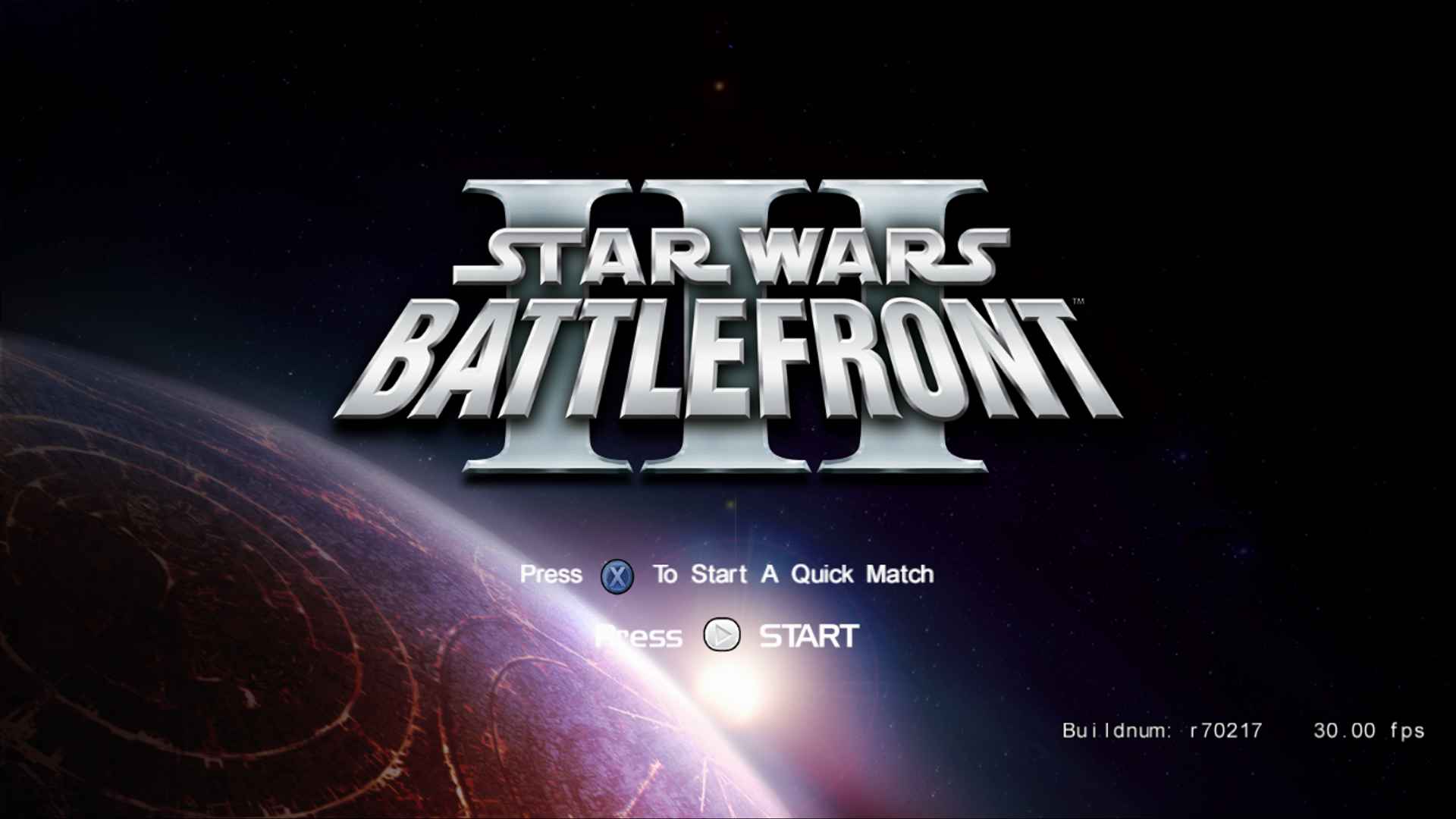Star Wars: Battlefront III (found build of cancelled "Star Wars" third-person shooter sequel; 2006-2012)
This article has been tagged as Needing work due to its needing a rewrite (i.e., "Development" and "Cancellation" sections are mostly copied and pasted from here, unsourced claims, informal writing, etc.).
Star Wars: Battlefront III was the expected third installment to the Star Wars: Battlefront series. It had gone through multiple stages of "development hell", before being cancelled altogether.
Development
In 2006, LucasArts approached Free Radical Design and asked them to make Battlefront III. Due to the nature of the project and the fact that they'd be working with the Star Wars license, Free Radical Design accepts LucasArts' offer and begins work on Battlefront III. They see this as a great opportunity to show off not only what their team was capable of, but also their engine.[1]
Work began in 2007. Mid-late this year builds were being compiled for use to test on consoles, though they are still in a very rough state. Relations with LucasArts are still quite good at this point, though things begin to get a little shaky at LucasArts.
Things for Free Radical Design did not look too good in early 2008. The Haze team has been struggling for some time, and Ubisoft has been sending producers over to Free Radical Design to get the game ready in time for its new release, as it has already been delayed from the PlayStation 3's launch. These producers have been very tough on the team and morale is thinning; rumors are circulating that Free Radical Design is sending Battlefront III developers over to Haze. However, as the circumstances show, this is not out of free will and is more to do with contractual obligations and that fact they just want Haze out the door. David Doak and Steve Ellis decide to come clean to LA and ask for a delayed release date for Battlefront III, due to internal studio struggles. This was unfortunately around the time Jim Ward left the company and LucasArts' management was running the company until the new CEO arrived. They agree though this will not bode well for Free Radical Design.
In mid-2008, Darrell Rodriguez arrives and begins to cut costs at LA. Countless projects were cancelled and many employees were laid off. Free Radical Design begins to take notice and start to worry. Because of how far through the project is, Rodriguez allows Free Radical Design to continue work on Battlefront III. This turns out to be a nightmare though, as he is pushing the company and the project as far as he can and as a result morale at Free Radical Design begins to dip again. This is the last thing they need. Eventually, relations with Free Radical Design and LucasArts get strained to the point where LucasArts refuses to pay Free Radical Design. They set unreachable milestones and force Free Radical Design to work unpaid.
In late 2008, Rebellion learns of the struggles that Free Radical Design is facing and offers to finish Battlefront III instead (to LucasArts). LucasArts shelve this idea; it may come in useful. Morale at Free Radical Design continues to decline, eventually forcing David Doak to leave the company, as he can't handle the stress that LA is forcing him to deal with. Regardless, Free Radical Design continues to press on, determined to finish the game.[2]
Cancellation
During this time, relations between Free Radical Design and LucasArts hit an all-time low. Internal videos are being shown to LA employees, depicting Free Radical Design's take on their studio management. This crosses the line for Darrell Rodriguez, and he orders the cancellation of the game. He knows that the money in Free Radical Design's bank is beginning to run low and so refuses to pay them the amount owed as stated in the contract. He forces them into a corner by explaining that he will take them to court and make the case until the money runs out or give them a very small sum if they just walk away. Free Radical Design was in no position to fight LucasArts, so they had to accept the small sum of money and walk away. Work commences on pitches for new projects and IPs, though nothing seems to work. For a moment there was the prospect of a new Goldeneye game, though that also fell through.
During Christmas 2008, Free Radical Design has no choice but to enter administration. All the months of unpaid work had run their bank account dry, and the money they accepted from LucasArts was only a small amount of what they were actually owed. Soon after their Christmas party, Free Radical employees arrived at work to find the doors locked and a note telling them to meet at a local Hotel. It was here that the vast majority of them would find out that they no longer had jobs (~160 people at the height of the global recession) and were here to collect their severance packages. Those who were allowed to remain were told to gut the studio and pack up all their equipment, so they were ready to move into their new studio. Crytek eventually bought Free Radical Design and all the employees who still had jobs were now Crytek developers.
In 2009, LucasArts began talks with Rebellion. Even though they didn't pay Free Radical Design for 6 months, they still invested a lot of money into the project. Initially, the plan was to finish the game, but with a deadline for the game to be finished by the end of the year, it simply wasn't feasible. Rebellion decides to create a handheld version of the game, and so they import the raw assets into their own engine and create "Elite Squadron", a bare-bones version of Battlefront III.
Leaked Screenshots/Footage
There have been multiple leaks throughout the years, with the first one being model renders inside developer Richard Smith's portfolio after being laid off from Free Radical Design. In 2009, a phone recording of an internal trailer appeared on IGN, only to be taken down soon after because of LucasArts' request.
Leaked Build
A build of the game was leaked on 4chan and Reddit in January 2016. The build requires an Xbox Development Kit and has been confirmed to be 9 months older than the final build of the game. In addition, it is a very early port of the game to the Xbox 360, meaning there are multiple framerate issues and bugs.

